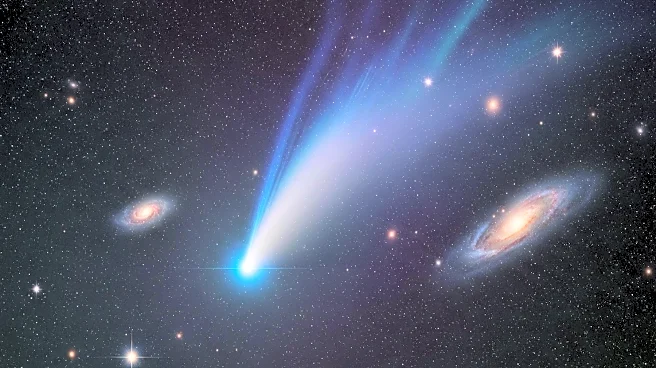What's Happening?
Milwaukee recently observed the phenomenon known as equilux, where the city experienced equal lengths of daylight and nightlight. This event occurred on Thursday, September 25, a few days after the autumnal equinox, which marked the official start of fall on September 22. The equilux is distinct from the equinox due to two main reasons: the angular size of the sun and atmospheric refraction. According to Mallory Conlon, an astronomer from Yerkes Observatory, the sun does not appear as a point source from Earth. Its edges become visible above the horizon before its center rises and remain visible after the center sets. Additionally, atmospheric refraction bends sunlight, making the sun visible even when it is technically below the horizon, thus extending the period of light before sunrise and after sunset.
Why It's Important?
Understanding the difference between equinox and equilux is significant for both scientific and educational purposes. It highlights the complexities of Earth's atmospheric interactions and the celestial mechanics that govern day and night cycles. This knowledge is crucial for astronomers and meteorologists who study these phenomena to better predict weather patterns and understand Earth's climate system. For the general public, it provides an opportunity to appreciate the intricacies of natural events that affect daily life, such as the timing of daylight and its impact on activities and energy consumption.
What's Next?
As the fall season progresses, daylight hours will continue to decrease until the winter solstice. This gradual change in daylight can affect various sectors, including agriculture, energy, and transportation, as they adapt to shorter days. Educational institutions and observatories may use this period to engage the public with events and discussions about astronomical phenomena, fostering a greater appreciation for science and nature.
Beyond the Headlines
The occurrence of equilux also serves as a reminder of the importance of scientific literacy in understanding natural phenomena. It underscores the need for public education on how atmospheric and celestial events influence the environment and human activities. This awareness can lead to more informed discussions on topics such as climate change and energy conservation.












